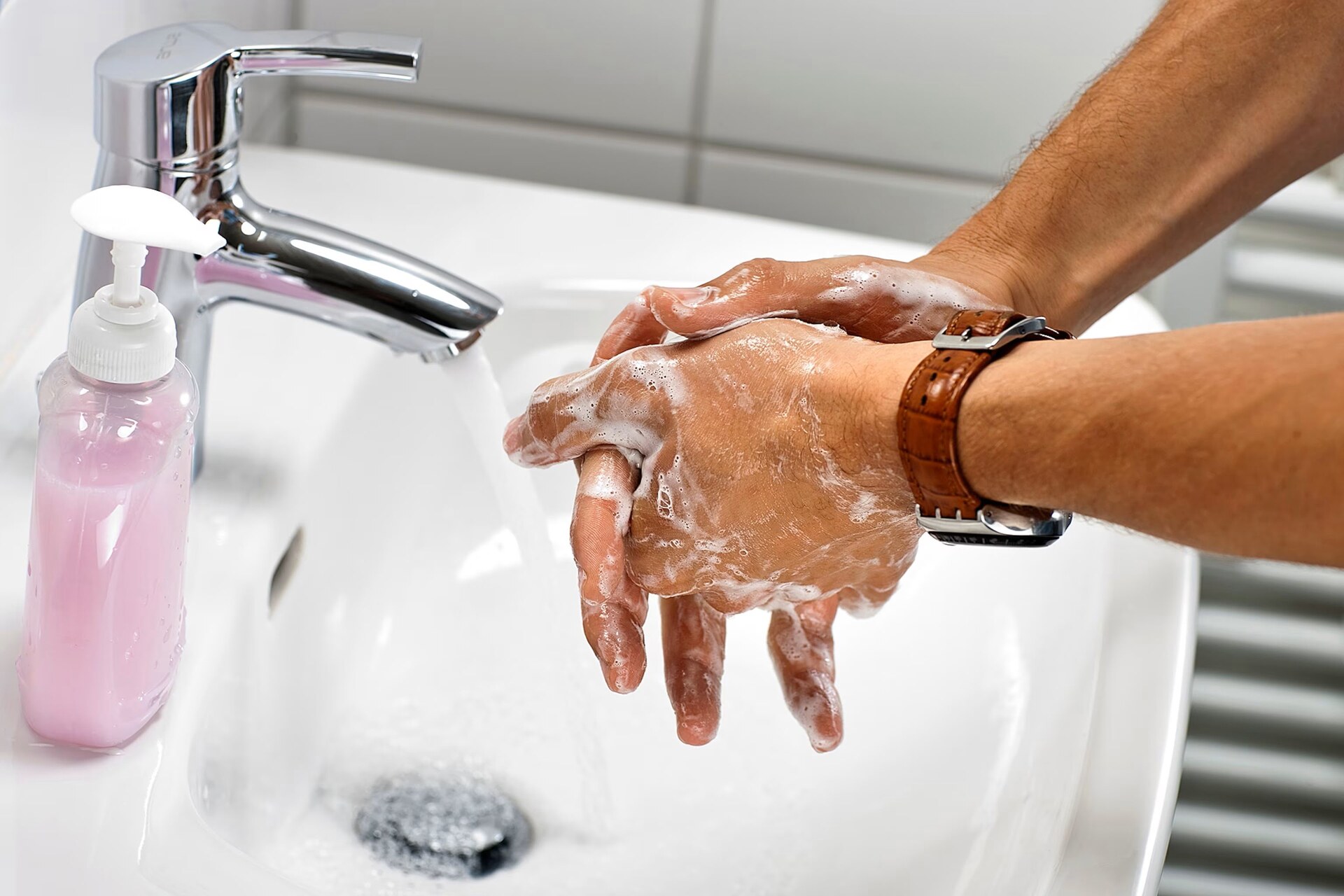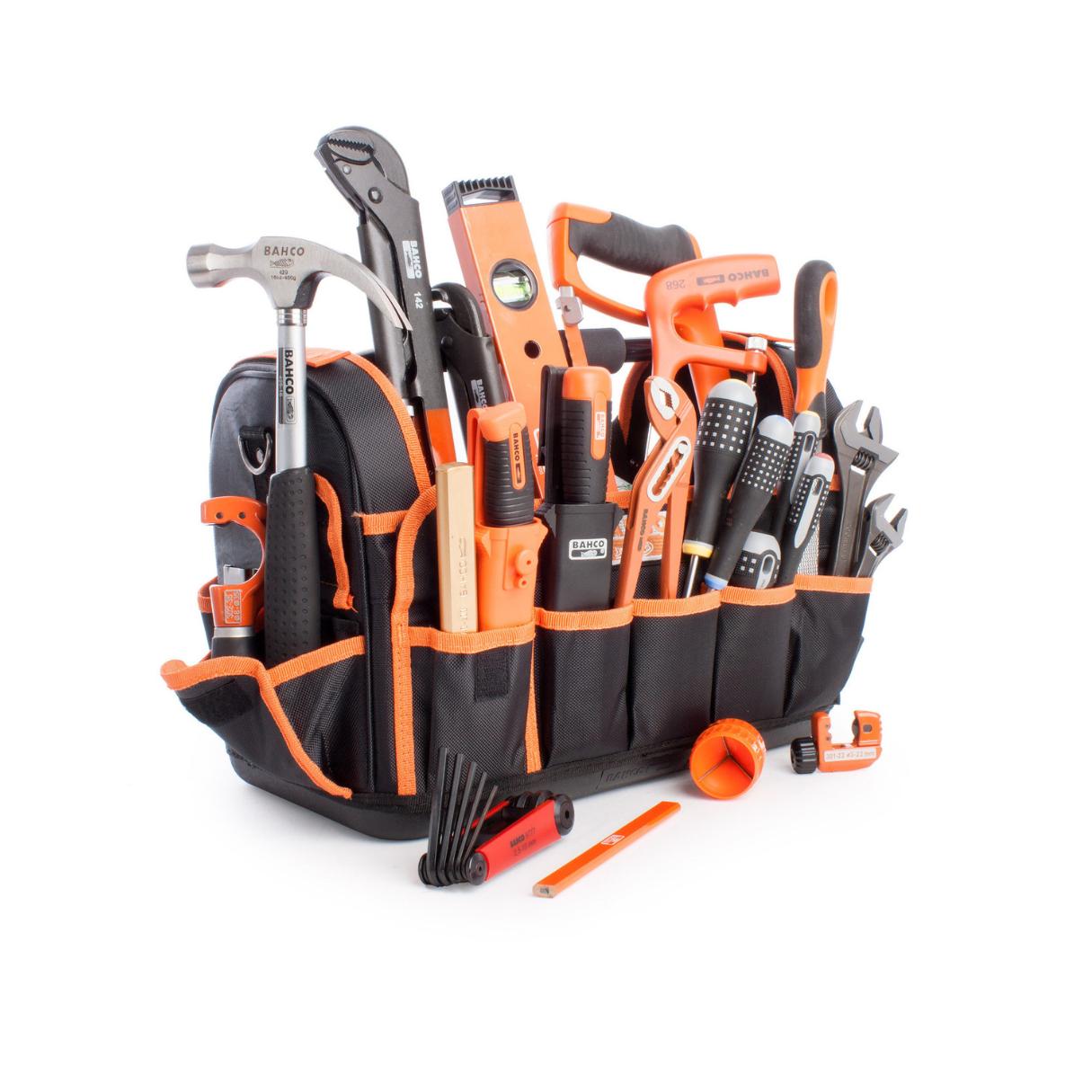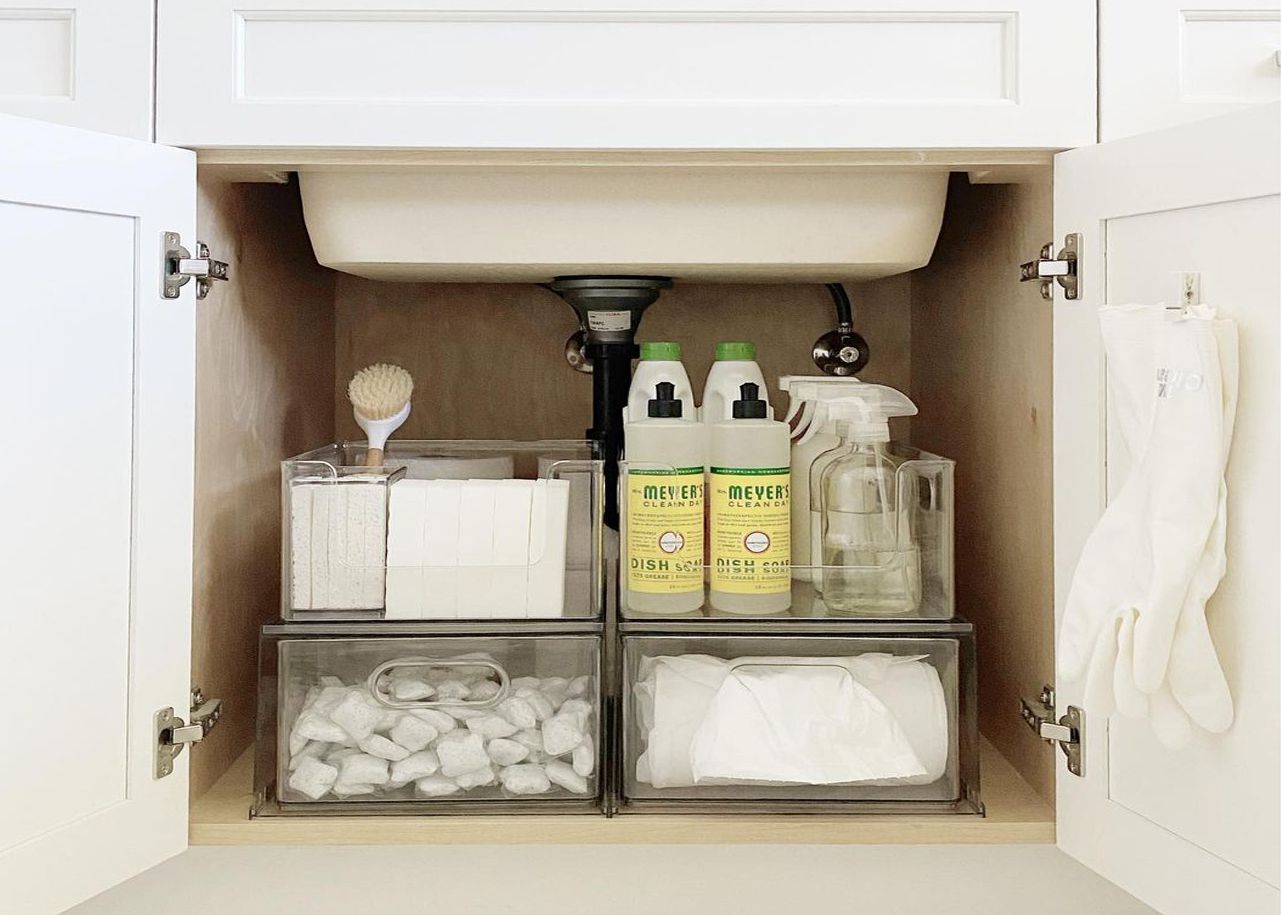

Articles
What Must A Hand Sink Have
Modified: August 27, 2024
Looking for articles on what a hand sink must have? Discover essential features and requirements for hand sinks in this informative article.
(Many of the links in this article redirect to a specific reviewed product. Your purchase of these products through affiliate links helps to generate commission for Storables.com, at no extra cost. Learn more)
Introduction
When it comes to maintaining proper hygiene in commercial establishments or public spaces, one of the essential components is a hand sink. A hand sink, also commonly known as a handwashing station, provides individuals with a convenient and accessible place to clean their hands. Whether it’s a restaurant, healthcare facility, school, or workplace, having a well-designed and functional hand sink is crucial to promote cleanliness and prevent the spread of germs.
In this article, we will explore the key features that a hand sink should have to ensure effectiveness and compliance with health and safety regulations. From size and dimensions to material quality, faucet types to accessibility features, we will cover everything you need to know to make an informed decision when choosing a hand sink for your establishment.

Before we dive into the specifics, it’s important to note that the design and requirements of a hand sink may vary depending on the industry and local regulations. Always consult with local authorities and health departments to ensure compliance with specific guidelines in your area.
Key Takeaways:
- Choosing the right hand sink involves considering size, material, faucet type, and accessibility features. Compliance with health and safety regulations is crucial for maintaining a clean and hygienic environment.
- Proper maintenance, regular cleaning, and adherence to local regulations are essential for ensuring the effectiveness and longevity of hand sinks. Accessibility features and staff training promote inclusivity and proper hand hygiene practices.
Size and Dimensions
The size and dimensions of a hand sink are crucial factors to consider when selecting the right option for your establishment. The size should be adequate to accommodate the number of users and the space available. Generally, a standard hand sink is approximately 14 to 18 inches in width and 10 to 15 inches in depth. This compact size ensures that it can fit comfortably in most commercial kitchens, bathrooms, and other areas where hand hygiene is essential.
In addition to the width and depth, the height of the hand sink is also important for ergonomic reasons. The sink should be installed at a height that allows users to easily reach the faucet and comfortably wash their hands without straining or bending. The standard height for a hand sink is around 36 inches, but it may vary based on the needs of specific users, such as children or individuals with disabilities.
It’s crucial to consider not just the sink unit itself but also the surrounding space. Make sure to leave enough room for users to stand comfortably in front of the sink, access the soap and towel dispensers, and maneuver without any obstructions.
Moreover, when installing multiple hand sinks in a row, it’s important to maintain a sufficient gap between them to ensure proper personal space for individuals using the sinks simultaneously. This will prevent overcrowding and allow for adequate movement and handwashing.
By carefully considering the size and dimensions of the hand sink, you can ensure that it fits seamlessly into your space and provides a comfortable and efficient handwashing experience for everyone.
Material and Durability
When it comes to hand sinks, choosing the right material is crucial for durability and longevity. The sink should be able to withstand frequent use and exposure to water, cleaning agents, and other potentially corrosive substances. Here are some popular materials used for hand sinks:
- Stainless Steel: Stainless steel is a widely preferred choice due to its durability and resistance to corrosion. It is easy to clean, hygienic, and can withstand heavy use. Additionally, stainless steel sinks have a sleek and professional appearance, making them suitable for various commercial settings.
- Porcelain: Porcelain hand sinks are durable and resistant to stains. They are commonly used in commercial bathrooms and other areas where aesthetics are a priority. However, porcelain sinks may be more prone to chipping or cracking compared to stainless steel.
- Plastic: Plastic hand sinks are lightweight, affordable, and easy to install. They are commonly used in temporary or portable setups, such as outdoor events or construction sites. However, plastic sinks may not be as durable as stainless steel or porcelain options.
- Composite Materials: Some hand sinks are made from composite materials like acrylic or quartz. These sinks offer a balance between durability and aesthetics, providing a range of design options to suit different preferences.
Regardless of the material chosen, ensure that the sink is NSF (National Sanitation Foundation) certified, indicating that it meets specific sanitation and durability standards. This certification ensures that the sink is designed to withstand the rigors of commercial use and maintain hygiene standards.
It’s also important to consider the quality of the faucet and controls in relation to the sink material. Opt for faucets made from high-quality materials, such as brass, to ensure long-lasting performance and resistance to corrosion. Additionally, choose controls that are easy to operate and maintain, minimizing the risk of wear and tear over time.
By selecting a hand sink made from durable materials and considering the quality of the faucets and controls, you can ensure that your sink will withstand the test of time and continue to provide a hygienic handwashing solution for your establishment.
Faucet and Controls
The faucet and controls of a hand sink are critical components that directly impact the user experience and the overall functionality of the sink. Here are some key factors to consider:
Faucet Types:
There are various types of faucets available for hand sinks, each with its own advantages and considerations:
- Standard Manual Faucet: This is the most common type of faucet, operated by manually turning a handle or lever to control the water flow. It is generally cost-effective and easy to use, but it does require proper hand hygiene practices to avoid cross-contamination.
- Automatic Sensor Faucet: Sensor faucets use infrared technology to detect hand movements and automatically provide water flow. They eliminate the need for direct contact, promoting hygiene and reducing the risk of cross-contamination. However, they tend to be more expensive and require occasional maintenance to ensure proper sensor functioning.
- Mixing Valve Faucet: Some hand sinks may have a built-in mixing valve faucet that allows users to adjust the water temperature to their preference. This is particularly useful in areas where warm water is required for effective handwashing.
Control Mechanisms:
The control mechanisms determine how users can operate the faucet. Consider the following options:
- Handles or Levers: Traditional faucets often come with handles or levers that users can manually turn or lift to control the water flow. These are simple and familiar mechanisms that work well for most settings.
- Push Buttons: Some sinks have push-button controls, where users can press a designated button to activate the water flow. This can be a good option for public areas, as it reduces the risk of users leaving the water running unintentionally.
- Foot Pedals: Foot pedals allow users to operate the faucet using their feet, eliminating the need for hand contact and promoting better hygiene. This type of control mechanism is commonly used in healthcare facilities, where strict infection control measures are necessary.
Regardless of the faucet type and control mechanism, it’s essential to ensure that they are easy to operate and maintain. Consider the preferences, needs, and limitations of your users to choose the best faucet and control options for your hand sink.
Drainage System
The drainage system of a hand sink plays a crucial role in maintaining cleanliness and preventing water buildup. Here are some key considerations regarding the drainage system:
Drain Size:
The drain size determines how quickly the sink can remove water and debris. A larger drain size, typically around 2 inches in diameter, allows for faster drainage, reducing the risk of water pooling and promoting efficient use of the sink.
Trap:
A trap is a U-shaped pipe located beneath the sink that prevents foul odors and sewage gases from entering the establishment. The trap retains a small amount of water, creating a seal to block any odors. It’s important to choose a sink with a properly functioning trap to ensure hygiene and odor control.
Overflow Prevention:
In scenarios where water flow exceeds the capacity of the drain, an overflow prevention mechanism is crucial to avoid spills and potential slip hazards. The sink should be equipped with an overflow drain or an overflow ring to redirect excess water back into the sink basin rather than onto the surrounding surfaces.
Proper Slope:
To facilitate efficient drainage, the sink basin should have a slight slope towards the drain. This slope allows water to flow smoothly into the drain, preventing stagnant water and potential blockages. Regular inspection and cleaning of the drain should be carried out to ensure proper functionality.
Additionally, it’s important to ensure that the drainage system complies with local plumbing codes and regulations. These codes may specify requirements such as the use of specific trap types or the installation of backflow prevention devices to maintain the integrity of the water supply.
By considering the drain size, trap functionality, overflow prevention, and proper slope of the sink basin, you can ensure efficient water drainage and maintain a clean and hygienic environment for handwashing.
Make sure a hand sink has hot and cold running water, soap, and paper towels or a hand dryer. It should also be easily accessible and located near food preparation areas.
Read more: Must-Haves When Building A House
Soap and Towel Dispensers
The presence of soap and towel dispensers at a hand sink is essential to facilitate proper handwashing and promote hygiene. Here are some considerations regarding soap and towel dispensers:
Soap Dispenser:
An effective soap dispenser should be easily accessible and able to dispense an adequate amount of soap for thorough handwashing. Consider the following options:
- Manual Dispenser: Manual soap dispensers require users to press a lever or push a button to dispense the soap. These are cost-effective and straightforward options that are commonly used in various settings.
- Automatic Dispenser: Automatic soap dispensers use sensors to detect hand movements and dispense soap without the need for direct contact. These dispensers promote hygiene and reduce the risk of cross-contamination, but they are generally more expensive than manual dispensers.
- Wall-Mounted vs. Countertop Dispensers: Soap dispensers can be mounted on the wall or placed on countertops. Consider the available space and the convenience of users when choosing the appropriate dispenser type.
Towel Dispenser:
Proper hand drying is crucial after handwashing to remove moisture and prevent the spread of bacteria. Consider the following towel dispenser options:
- Paper Towel Dispenser: Paper towel dispensers are commonly used due to their convenience and cost-effectiveness. They provide single-use towels that are discarded after use, promoting hygiene and reducing the risk of cross-contamination.
- Automatic Hand Dryer: Automatic hand dryers use warm air to dry hands quickly. They eliminate the need for paper towels, which can be more environmentally friendly and cost-effective in the long run. However, it’s important to ensure that the hand dryer is powerful enough to dry hands effectively within a reasonable timeframe.
- Linen Towel Dispenser: Linen towel dispensers are commonly used in high-end establishments or settings where a more luxurious hand-drying experience is desired. These dispensers provide fabric towels that are laundered and reused.
Consider the ease of refilling and maintaining the soap and towel dispensers. Look for options that have ample capacity and are easy to clean and refill to ensure a continuous supply of soap and towels for handwashing.
By providing convenient and accessible soap and towel dispensers, you can encourage proper hand hygiene practices and help maintain a clean and hygienic environment at your establishment.
Accessibility Features
Ensuring that a hand sink is accessible to all individuals, including those with disabilities or mobility limitations, is an important consideration. Here are some accessibility features to keep in mind:
Height and Clearance:
The height of the hand sink should be adjustable to accommodate users of different heights, including children, wheelchair users, or individuals with mobility aids. The sink should provide enough clearance underneath for wheelchair users to comfortably reach the faucet and sink basin. Consider installing sinks with a front approach design, allowing individuals to approach the sink with their wheelchair without any obstructions.
Hand Controls:
Ensure that the faucet controls are easily operable for individuals with limited dexterity or strength. Opt for lever handles or touchless sensor faucets that require minimal effort to activate. Placement of the controls should be within reach of a seated individual, making the sink accessible for all users.
Signage and Markings:
Clearly visible signage and markings can help guide individuals to the accessible hand sink. Braille labels and tactile indicators on the controls are essential for individuals with visual impairments. In addition, contrasting colors can be used to make the sink and its components more visible to individuals with low vision.
Grab Bars and Support:
Installing grab bars near the sink area provides additional support and stability for individuals who require assistance or have balancing challenges. These bars can aid in transferring to and from a wheelchair, ensuring a safer and more accessible handwashing experience.
Sink Design:
Consider sinks with a shallow basin or a tilted design to reduce the need for individuals to lean or stretch too far for handwashing. This can minimize strain and discomfort, making it easier for individuals with mobility limitations to use the sink independently.
Visual and Auditory Signals:
Incorporating visual or auditory signals can be beneficial for individuals with hearing impairments. These signals can indicate when the water is running, the soap dispenser is working, or the hand dryer is activated, ensuring that all users are aware of the handwashing process.
Providing accessibility features in a hand sink demonstrates a commitment to inclusivity and ensures that individuals of all abilities can maintain proper hand hygiene. By considering these features, you can create an environment that is welcoming, accessible, and accommodating for everyone.
Plumbing and Installation Requirements
Proper plumbing and installation are crucial for the functionality and efficiency of a hand sink. Here are some important considerations regarding plumbing and installation requirements:
Water Supply:
The hand sink should be connected to a reliable and clean water supply. Ensure that the water supply is regulated with appropriate devices, such as backflow prevention devices, to prevent contamination of the water source. The water supply should provide adequate pressure and temperature control for effective handwashing.
Drainage System:
Ensure that the sink is properly connected to the drainage system to facilitate the proper disposal of waste water. The drainage system should comply with local plumbing codes, which may specify the use of specific materials or trap configurations to ensure proper sanitation and odor control.
Hot Water:
Depending on the industry and local regulations, hot water may be required for effective handwashing. Ensure that the hand sink is connected to a water heating system that can provide the necessary hot water temperature. The water heating system should be properly maintained and regulated to prevent scalding or temperature fluctuations.
Installation Height and Accessibility:
Install the hand sink at a suitable height for easy access. Consider varying the height or providing adjustable options to accommodate users of different heights and abilities. Ensure that there is adequate clearance around the sink area for easy maneuverability, especially for individuals with mobility aids or wheelchairs.
Plumbing Codes and Regulations:
Always adhere to local plumbing codes and regulations when installing a hand sink. These codes provide guidelines on plumbing standards, fixture requirements, drainage systems, and other related factors. By complying with these codes, you not only ensure proper installation but also maintain the health and safety standards mandated by local authorities.
Professional Installation:
In many cases, it is recommended to seek the assistance of a professional plumber for the installation of hand sinks. They have the expertise and knowledge to properly connect the sink to the water supply, drainage system, and any necessary plumbing fixtures. Professional installation ensures that the sink operates efficiently and complies with all plumbing and building regulations.
By considering the plumbing and installation requirements of a hand sink, you can ensure proper functionality, compliance with regulations, and a safe and efficient handwashing experience for all users.
Maintenance and Cleaning Tips
Maintaining cleanliness and proper hygiene of the hand sink is essential to ensure its effectiveness and prevent the spread of germs. Here are some maintenance and cleaning tips to keep your hand sink in optimal condition:
Regular Cleaning:
Clean the hand sink regularly to remove dirt, grime, and any potential contaminants. Use a mild cleaning solution or disinfectant recommended for the specific material of your sink. Scrub the sink basin, faucet, and controls to ensure thorough cleaning. Pay extra attention to areas that may accumulate residue, such as around the drain and faucet spout.
Sanitize Frequently Touched Surfaces:
Sanitize frequently touched surfaces, such as faucet handles, control knobs, soap dispensers, and towel dispensers, regularly to prevent the spread of bacteria. Use a disinfectant that is safe for the specific material of the surfaces and follow the manufacturer’s instructions for proper use.
Inspect and Maintain Drainage:
Regularly inspect the drainage system to ensure proper flow and prevent clogs. Remove any debris or buildup that may hinder drainage. Check the trap and clean it out if necessary to maintain proper functionality and prevent foul odors. If you notice any signs of slow drainage or blockage, address them promptly to avoid more significant plumbing issues.
Check Faucet Performance:
Regularly check the performance of the faucet, including the water pressure, temperature control, and proper functioning of any automatic sensors. If you notice any issues, such as low water pressure, leaks, or inconsistent temperature, address them promptly to avoid any disruptions to handwashing activities.
Replace Soap and Towel Dispensers:
Regularly check the soap and towel dispensers and replenish them with fresh supplies as needed. Monitor the condition of the dispensers themselves and replace them if they become damaged or worn out. Ensuring that the dispensers are functioning correctly and stocked with soap and towels is crucial for promoting regular handwashing.
Seek Professional Maintenance:
In addition to regular cleaning and maintenance, it is recommended to schedule periodic professional servicing for your hand sink. Professional plumbers or maintenance technicians can inspect the plumbing connections, ensure proper functionality, and address any underlying issues that may affect the performance of the hand sink.
Staff Training and Education:
Train your staff on proper hand hygiene practices and the correct use of the hand sink. Emphasize the importance of regular handwashing and provide guidelines on how to clean and maintain the sink effectively. Encourage a culture of cleanliness and accountability among all users of the hand sink.
By following these maintenance and cleaning tips, you can keep your hand sink in optimal condition, promote proper hand hygiene, and create a clean and hygienic environment for everyone who uses it.
Read more: What Hand Tools Have A Lifetime Warranty
Compliance with Health and Safety Regulations
Complying with health and safety regulations is crucial when it comes to hand sinks, as they play a significant role in maintaining hygiene and preventing the spread of germs. Here are some key aspects to consider in order to ensure compliance:
Local Health Department Guidelines:
Familiarize yourself with the guidelines and requirements set forth by your local health department or regulatory agencies. These guidelines often outline specific standards for hand sinks, including their placement, design, and functionality. Ensure that your hand sink meets all the necessary criteria to remain in compliance with these regulations.
Number and Location of Hand Sinks:
Determine the number of hand sinks required for your establishment based on the size, type of operation, and local regulations. Different areas within your facility may have specific requirements regarding the placement and distribution of hand sinks to ensure accessibility and convenience for individuals in various areas.
Proximity to Food Preparation Areas:
Pay close attention to the proximity of hand sinks to food preparation areas. Health codes often require hand sinks to be conveniently located near these areas to promote frequent handwashing. This ensures that food handlers can maintain proper hygiene throughout the preparation process, minimizing the risk of food contamination.
Hot Water Availability:
Verify whether your industry or local regulations require hot water at hand sinks. Some jurisdictions mandate the availability of hot water for effective handwashing. In such cases, ensure that your hand sinks are equipped with a water heating system capable of providing water at the required temperature.
Hand Care Products:
Comply with regulations concerning the types of hand care products used at hand sinks. Health departments often specify the use of specific types of soap or hand sanitizer to ensure optimal hand hygiene. Make sure to use products that meet these standards and provide proper information and labeling as required.
Regular Maintenance and Inspections:
Implement a routine maintenance plan to ensure that your hand sinks remain in proper working condition. Regularly inspect and clean the sinks, faucets, drains, and dispensers. This includes checking for leaks, proper water flow, drainage functionality, and the availability of soap and towels.
Record-Keeping and Documentation:
Keep records of any inspections, maintenance activities, and repairs conducted on the hand sinks. This documentation helps demonstrate your commitment to compliance and provides a reference in case of any inspections by regulatory authorities.
Staff Training and Education:
Make sure your staff is properly trained on the requirements and regulations surrounding handwashing and the use of hand sinks. Train them on proper handwashing techniques, including the duration and frequency of handwashing. Additionally, educate them about the importance of complying with health and safety regulations to maintain a safe and healthy environment.
Compliance with health and safety regulations is not only a legal obligation but also essential for ensuring the well-being of your customers, employees, and the overall reputation of your establishment. By adhering to these regulations, you can demonstrate a strong commitment to maintaining high standards of hygiene and promoting the health and safety of everyone who interacts with your hand sinks.
Frequently Asked Questions about What Must A Hand Sink Have
Was this page helpful?
At Storables.com, we guarantee accurate and reliable information. Our content, validated by Expert Board Contributors, is crafted following stringent Editorial Policies. We're committed to providing you with well-researched, expert-backed insights for all your informational needs.














0 thoughts on “What Must A Hand Sink Have”